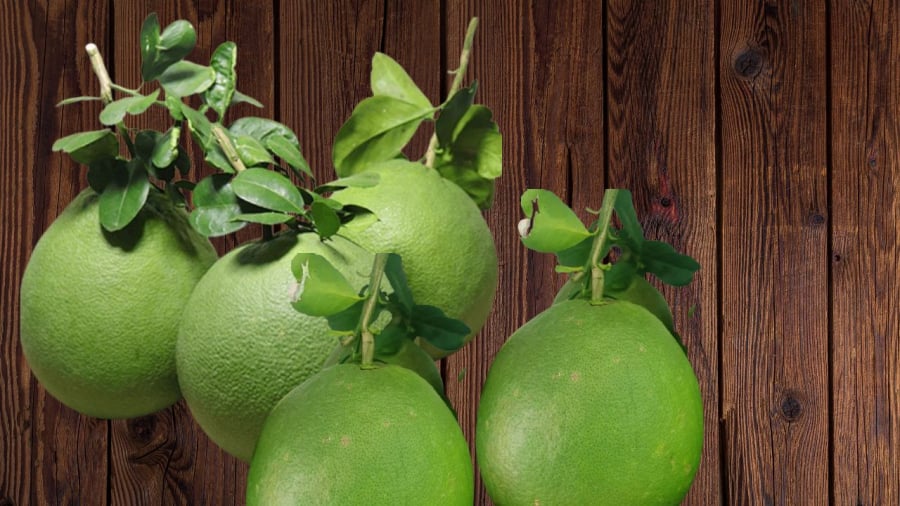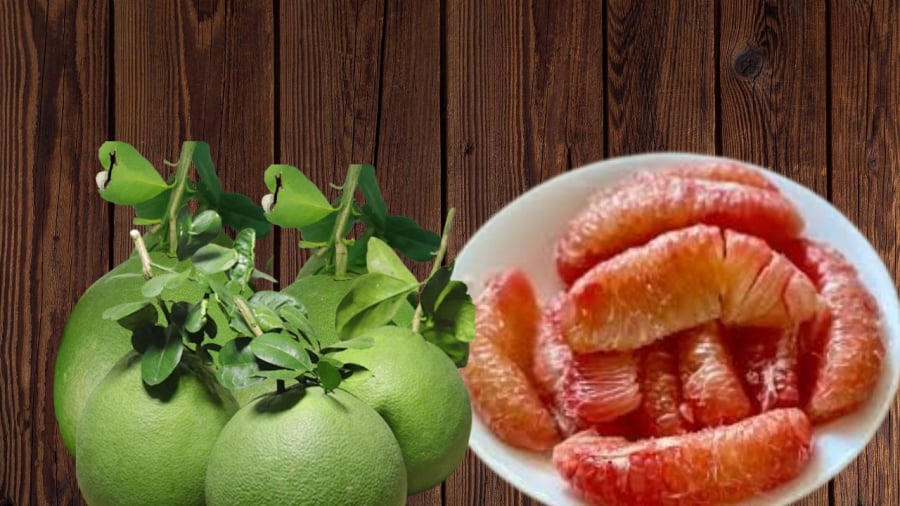Green-skinned pomelos are now sold almost year-round, in comparison to other types of pomelos. The fruit has large, evenly spaced segments with a beautiful pink flesh that doesn’t become soft and watery like other varieties. It also has a unique, thin skin that can be easily peeled, making it a popular choice for offerings, gifts, and decorative fruit plates.
However, to ensure you get the best-tasting green pomelo, you need to know how to choose wisely. Otherwise, you might end up with a bitter, pithy fruit with segments that don’t separate easily from the skin.
Here are some tips to select the perfect green pomelo:
**Inspect the Skin:**
Look for a pomelo with taut skin. The spines should be evenly spaced, and the larger the spines, the sweeter the fruit, indicating a mature pomelo. If the skin is not taut and the spines are tiny, it’s likely an unripe, prematurely harvested fruit, or a leftover from the previous season’s harvest. A slightly ivory-colored skin indicates a mature fruit, but if the stem has fallen off and the skin has turned yellowish, it’s likely an old fruit that has been detached from the tree for a while.

Green Pomelo with Delicious Spiny Skin
When you tap the fruit, a thin skin will produce a crisp, clear sound, while a thick skin will give a duller sound.
**Check the Weight:**
If you’re choosing between pomelos of similar sizes, go for the heavier one. If they differ in size, remember that a quality green pomelo should weigh at least 1 kilogram. This indicates a mature fruit that will be sweet and juicy. Smaller green pomelos are likely from older, undernourished, or diseased trees, and they are usually much cheaper than their larger counterparts.

Smaller Green Pomelos are Often Less Delicious
**Examine the Stem:**
If the pomelo still has its stem, make sure it’s fresh and firmly attached to the fruit. You should be able to press the stem with your finger, and if it’s fresh, it will spring back. If it feels stiff, the fruit has likely been stored for a long time and is no longer fresh. A freshly picked green pomelo will have a stem that’s firmly attached to the fruit. These are usually grade-A pomelos, while lower-grade ones often don’t have stems.
Green-skinned pomelos are renowned for their sweet, intense flavor and fragrant skin. When you visit a pomelo vendor, if you see oil spraying from the skin as the fruits knock against each other, it’s a sign of freshness. On the other hand, if the skin is dry and odorless, the fruit has likely been stored for a long time and will only release its aroma when cut open.
The Secret to Slicing Apples Without Browning
Apples are a nutritious treat, packed with vitamins, but they often fall victim to a dull, unappetizing appearance due to enzymatic browning shortly after being cut and exposed to the air. We have the solution to keep your apples looking fresh and tasty, revealing a simple way to prevent that unappealing discoloration.
Should You Buy Yellow Melon with or without the Stem?
Selecting the perfect cantaloupe can be a tricky task, and many are often perplexed by the age-old question: to stem or not to stem? The age-old dilemma of whether to choose a cantaloupe with a attached or detached stem has divided shoppers. The decision can make or break your taste experience, so it’s time to uncover the secrets to selecting the sweetest, most mouth-watering melon.



































